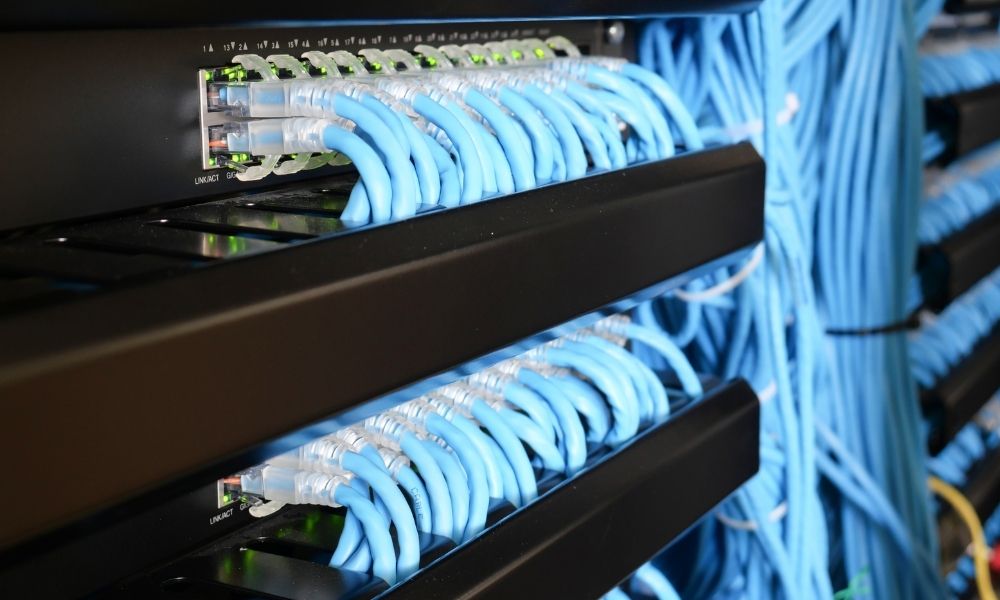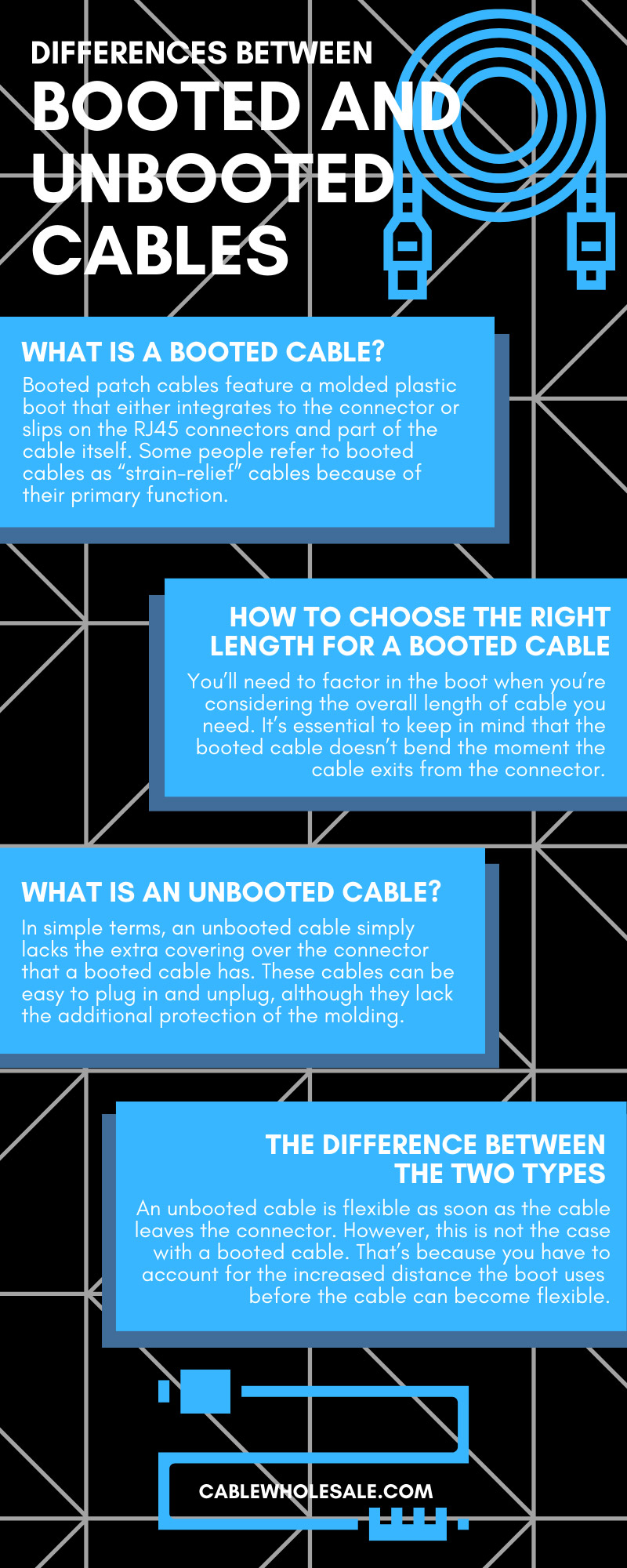
Using the right network cords is vital to keeping your setup well-organized. You have many different accessory options to choose from when setting up your internet connection. Some choices, such as booted and unbooted cables, may perform comparable jobs yet provide vastly different user experiences. Learn about the differences between booted and unbooted cables below.
What Are Patch Cords?
Before we dive into booted and unbooted cables, it’s crucial to define patch cords. Patch cords are cables featuring connectors on each end; you use them to join a device to another device or a power supply. You’ll commonly use patch cords for shorter-distance connections such as in offices and closets. You can also link a computer to a network hub, router, or Ethernet switch via an Ethernet patch cable. Those types of setups can be beneficial for people establishing personal computer networks.
Can You Use Patch Cords as Ethernet Cables?
An Ethernet cable and a patch cable are often interchangeable for copper networks. However, “patching” in from your patch panel to your switch is typically quicker with the latter.
What Is a Booted Cable?
Booted patch cables feature a molded plastic boot that either integrates to the connector or slips on the RJ45 connectors and part of the cable itself. Some people refer to booted cables as “strain-relief” cables because of their primary function.
The principal purpose of the boot is to protect the cable and connection from harm, including from wires suddenly detaching from the connector body. You’ll come across two types of boots: a standalone boot, which you can place on a cable that you’re constructing yourself, and an injection-molded boot, which comes with premade cables. Since the injection molding method drives the material straight into the connection and around the individual wires, injection-molded boots are considered more effective than slip-on boots.
RJ45 Cables
Ethernet cables are commonly referred to as RJ45 cables because they have RJ45 connectors on both ends. You typically use these cords to link computers to Ethernet networks. The RJ45 connector looks like a six-pin RJ11 connector, except it’s a little bigger.
These cables comprise 8 wires of varied colors because each connector features 8 pins. Depending on the device you want to connect to, you can configure RJ45 wires using one of two schemes: T-568 A or B.
Molded Cables
Molded cables are some of the most common booted cable types you’ll find. An RJ45 connector features a molded boot that links the connector to the cable with an unprotected RJ45 lock. You generally use these cables for applications in which you don’t need to frequently unplug the cables and plug them back in, such as in hard-to-reach spaces.
Snagless Boots
Snagless cables featured a distinctive boot compared to molded cables. A snagless cable’s boot features a little flap that prevents you from readily snapping off the RJ45 connector’s lock mechanism. You generally use these cables in applications with high insertion cycles, such as in easily accessible locations. You can move them away from the boot and the RJ45 connector if you need to so that you can get it out of the way.
How To Choose the Right Length for a Booted Cable
You’ll need to factor in the boot when you’re considering the overall length of cable you need. It’s essential to keep in mind that the booted cable doesn’t bend the moment the cable exits from the connector.
For example, you might calculate that you require 2 100-foot booted patch cables for your data center racks. However, if you don’t account for the boots, you may find that the cables aren’t long enough when you attempt to install them. The most straightforward way to determine the actual length you need is to measure the overall length of the cord from one end of a connector to the other and then add 6 to 12 inches to your initial measurement.
What Is an Unbooted Cable?
In simple terms, an unbooted cable simply lacks the extra covering over the connector that a booted cable has. These cables can be easy to plug in and unplug, although they lack the additional protection of the molding.
How You Create an Unbooted Cable
Essentially, all network cables start as unbooted cables. You can strip the cable’s outer jacket to your desired length. Then, you’ll snip the internal wires to the correct size and arrange them in an orderly fashion. Finally, you’ll place the connector at the end of the prepared cable.
When the connector is in place, crimp the gold connectors onto the wires to secure it. At the same time, you’ll push a plastic bar inside the connector to help with stability.
Advantages of Unbooted Cables
Unbooted cables lack tension relief, and they have no support for the connector’s locking tab. However, this can come in handy in certain situations. For example, patch panels and other high-density applications benefit tremendously from them. Things can get pretty tight when you’re moving around a 96-port patch panel with 96 patch wires connected to it. If you use a booted cable in this scenario, you could have some trouble getting it to fit. Therefore, using an unbooted type is a promising idea, especially if you expect many insertion cycles.
The Difference Between the Two Types
An unbooted cable is flexible as soon as the cable leaves the connector. However, this is not the case with a booted cable. That’s because you have to account for the increased distance the boot uses before the cable can become flexible.
This may not appear to be a huge deal, but it may have a significant effect in a handful of ways. For example, the cable has to extend wider from the patch panel because of the boot, making it more challenging to slot into conventional cable management. It can even prevent the rack door from closing all the way.
Furthermore, in the patch panel example, the locking tab on a booted cable may be tricky to remove; therefore, the additional space the boot takes up might make the difference in one’s ability to push it in far enough to disengage the connector.
Understanding the differences between booted and unbooted cables can help you make the right call for your home or business network. You can buy bulk Ethernet cables from CableWholesale to ensure you’re able to get these networks up and running as quickly as possible. Feel free to contact us with any questions about our products.




